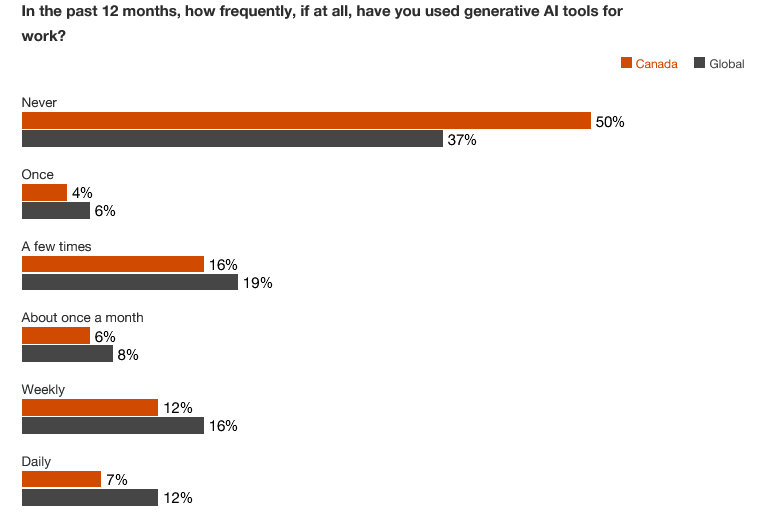
A gap has been found between the need to adopt AI and the perception of AI

Canadian workers are falling behind in embracing generative artificial intelligence (AI) despite the technology being able to revolutionize workplaces globally, according to a recent survey.
The 2024 Hopes and Fears Survey of PricewaterhouseCoopers, which gathered insights from 2,000 Canadian employees, indicated the need for upskilling to adapt to complex global “megatrends,” such as technological disruption.
The survey shows a notable disparity between Canadian workers and their global counterparts in the adoption of generative AI tools. Only 25% of Canadian respondents reported using AI tools at least monthly, compared to 36% globally.
Half of Canadian workers (versus 37% globally) have never used it, found PwC.

Source: PwC
Moreover, 28% of Canadians (versus 21% globally) said they don’t think adoption work would benefit their careers, while 26% (versus 23% globally) said they don’t know how to use it.
The findings “point to an urgent need for Canadian workers to assess what a changing world and workplace mean for them and how they can carve out a competitive advantage in an age of AI,” said PwC.
To address these challenges, the PwC report suggests several actions for Canadian workers and employers.
Workers are encouraged to:
Employers, on the other hand, must prioritize the employee experience by investing in fair pay, offering meaningful upskilling opportunities, and simplifying technologies and platforms.
“It’s also important to offer meaningful opportunities—and time—for employees to upskill in areas like generative AI. These are signs that employers value their people, which in turn makes employees feel more secure and motivates them to invest in themselves and contribute to the organization’s success.
“Giving workers the right tools and, importantly, simplifying the technologies and platforms they have to use at work, can also free up employee capacity to focus on opportunities to do their jobs better.”